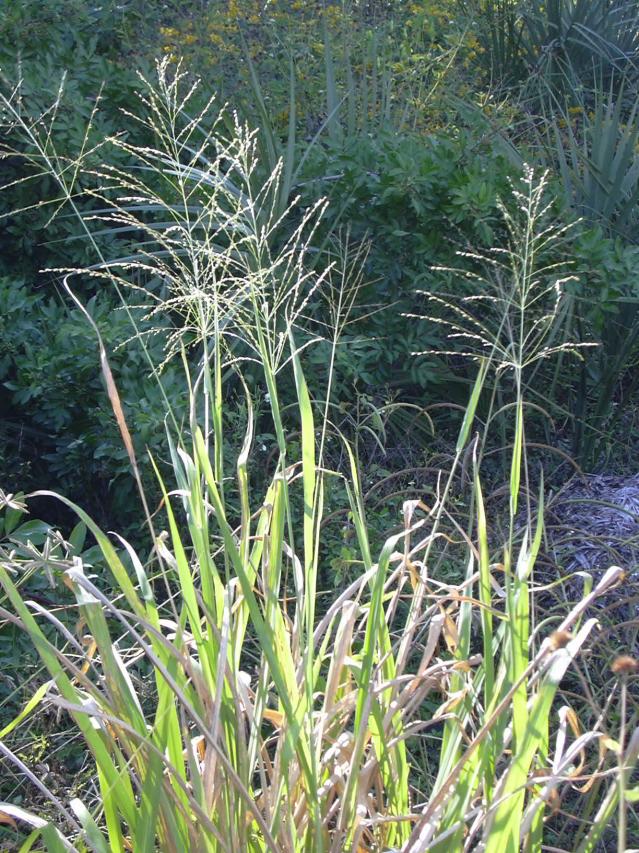TEST OF PRACTICAL KNOWLEDGE QUESTION
Specimen A (Dry groundnut haulm)

(a)i. Outline the procedure for obtaining specimen A.
(ii) State three benefits that farm animals could derive from feeding on specimen A.
Specimen B (Guinea grass)

(b)(i) Mention two each that could be used to propagate specimen B;
(ii) preserve specimen B.
Specimen C (Kitchen knife)

(c) State four of specimen C in animal production
a) i. To obtain specimen A (dry groundnut haulm), you can follow the steps below:
- Harvest the groundnut plant when the pods are fully mature and the leaves have dried up.
- Cut the plant near the base, leaving a few inches of the stem.
- Hang the cut plants in a well-ventilated area to allow the leaves to dry completely.
- Once fully dry, remove the leaves from the stem and store in a dry place until ready for use.
ii. Three benefits that farm animals could derive from feeding on specimen A (dry groundnut haulm) include:
- High protein content which can improve animal growth and production.
- Rich in fiber which can help improve digestive health and prevent digestive disorders.
- Good source of energy which can help improve animal performance and overall health.
b) i. Two methods that could be used to propagate specimen B (Guinea grass) are:
- Vegetative Propagation - This involves taking cuttings from existing plants and planting them in soil to grow new plants.
- Seed Propagation - This involves sowing seeds in soil to grow new plants.
ii. To preserve specimen B (Guinea grass), you can follow the steps below:
- Cut the grass into small pieces and dry it in a well-ventilated area.
- Once fully dry, store the grass in a dry, cool place, such as a barn or shed.
- To protect it from insects and other pests, you can wrap the grass in plastic or keep it in an airtight container.
c) Specimen C (Kitchen knife) can be used in animal production in the following ways:
- For slaughtering animals - A sharp knife is used to humanely slaughter animals for meat production.
- For castrating animals - A knife is used to castrate male animals to prevent unwanted breeding.
- For dehorning animals - A knife is used to remove the horns of animals, such as cattle, to prevent injuries to other animals and humans.
- For tail docking - A knife is used to shorten the tails of animals, such as pigs, to prevent injury and improve hygiene.
a) i. To obtain specimen A (dry groundnut haulm), you can follow the steps below:
- Harvest the groundnut plant when the pods are fully mature and the leaves have dried up.
- Cut the plant near the base, leaving a few inches of the stem.
- Hang the cut plants in a well-ventilated area to allow the leaves to dry completely.
- Once fully dry, remove the leaves from the stem and store in a dry place until ready for use.
ii. Three benefits that farm animals could derive from feeding on specimen A (dry groundnut haulm) include:
- High protein content which can improve animal growth and production.
- Rich in fiber which can help improve digestive health and prevent digestive disorders.
- Good source of energy which can help improve animal performance and overall health.
b) i. Two methods that could be used to propagate specimen B (Guinea grass) are:
- Vegetative Propagation - This involves taking cuttings from existing plants and planting them in soil to grow new plants.
- Seed Propagation - This involves sowing seeds in soil to grow new plants.
ii. To preserve specimen B (Guinea grass), you can follow the steps below:
- Cut the grass into small pieces and dry it in a well-ventilated area.
- Once fully dry, store the grass in a dry, cool place, such as a barn or shed.
- To protect it from insects and other pests, you can wrap the grass in plastic or keep it in an airtight container.
c) Specimen C (Kitchen knife) can be used in animal production in the following ways:
- For slaughtering animals - A sharp knife is used to humanely slaughter animals for meat production.
- For castrating animals - A knife is used to castrate male animals to prevent unwanted breeding.
- For dehorning animals - A knife is used to remove the horns of animals, such as cattle, to prevent injuries to other animals and humans.
- For tail docking - A knife is used to shorten the tails of animals, such as pigs, to prevent injury and improve hygiene.

